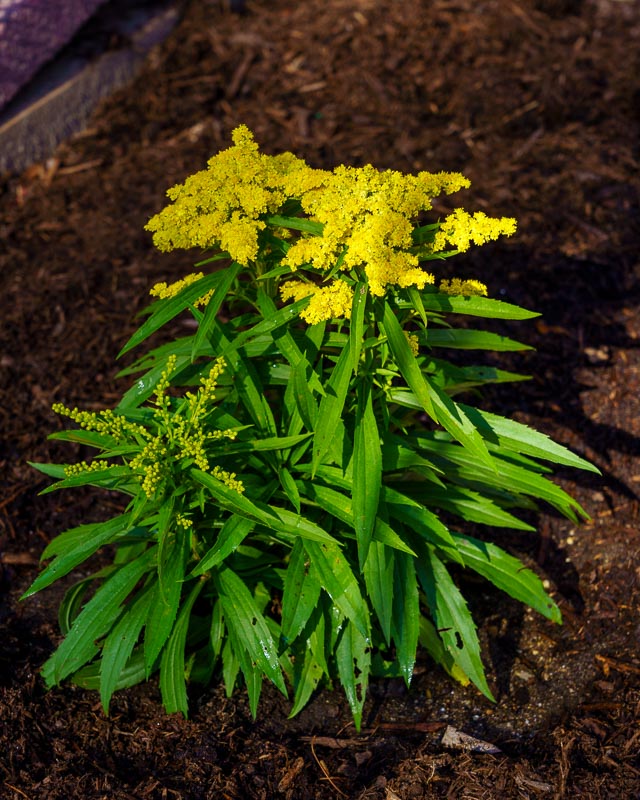Goldenrod
| Attribute | Value |
|---|---|
| Common Name | Goldenrod |
| Botanical Name | Solidago |
| Mature Size | 1.5–5 ft. tall, 1-3 ft. wide |
| Sun Exposure | Full sun; partial sun |
| Soil Type | Average to infertile, well-drained |
| Soil pH | Acidic, neutral |
| Bloom Time | Summer through fall |
| Flower Color | Yellow |
| Care | In general, goldenrod species require very little maintenance and will grow well in any sunny location with average or even poor soil. They rarely have pest or disease problems and can tolerate a variety of growing conditions. You might have to stake the taller varieties so the plants don't flop and bend. |
| Soil | Goldenrod is not overly picky about soil but it must be well-drained with a pH in the acidic-to-neutral range. This plant can tolerate sandy, rocky, and clay soils. Very rich soil can cause the plant to become leggy and potentially flop over. |
| Water | Water new goldenrod plants weekly to maintain damp, but not soggy soil. Mature goldenrod plants are drought tolerant and rarely need supplemental watering except when rainfall is scarce. |
| Temperature and Humidity | The hardiness range varies a bit depending on the species, but most goldenrods thrive in USDA cold hardiness zones 2 to 8. |
| Fertilizer | Fertilizing goldenrod is typically not necessary because the plants do well in lean soil conditions. However, if the soil quality is poor or you wish to give your plants a boost to increase their height, add a layer of compost in the spring. Too much fertilization often leads to floppy green growth and reduces flower production. |
| Pruning | Pruning stem tips early in the season can result in goldenrod plants becoming fuller and bushier and lead to more flowers later in the season. Deadheading spent flower heads can prolong the bloom season well into fall. Removing the flower heads before they go to seed can prevent rampant self-seeding. |
| Overwintering | At the end of the season or in late winter, cut the plant stalks back to a few inches above ground level. |
| Source | https://www.thespruce.com/goldenrod-wildflowers-2132951 |
